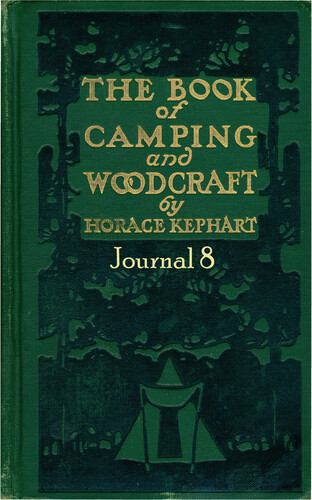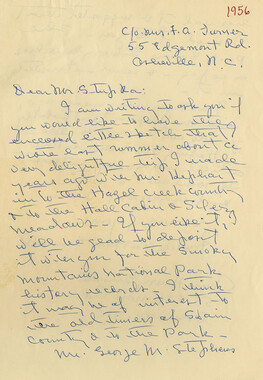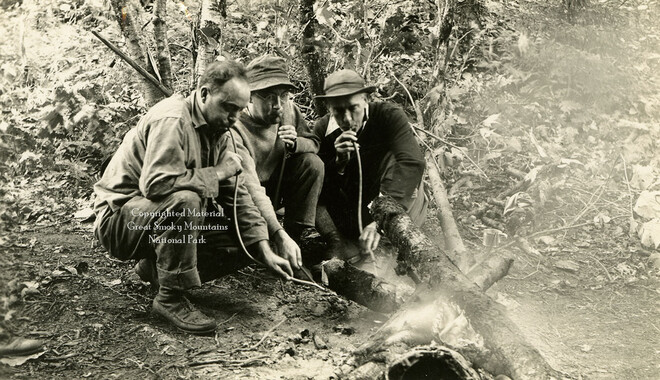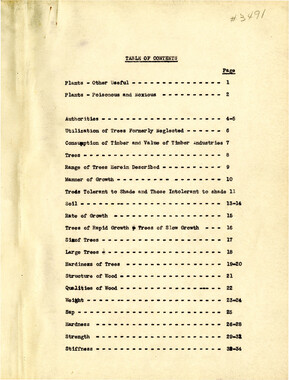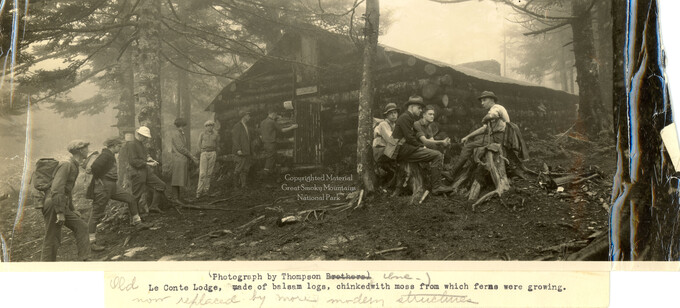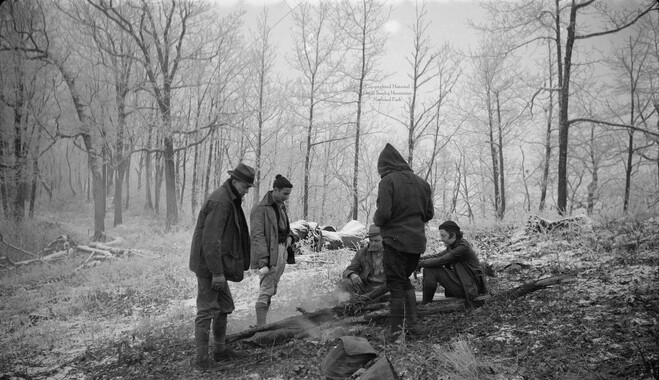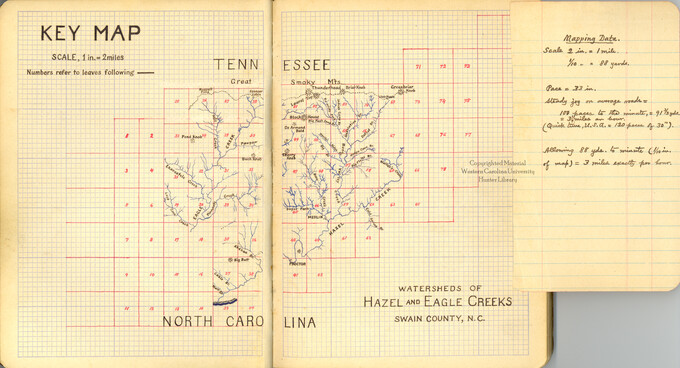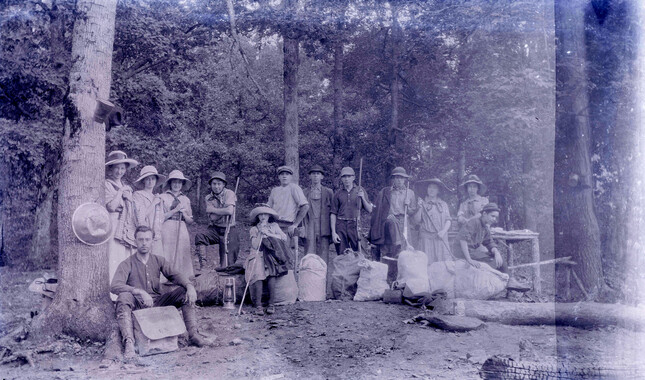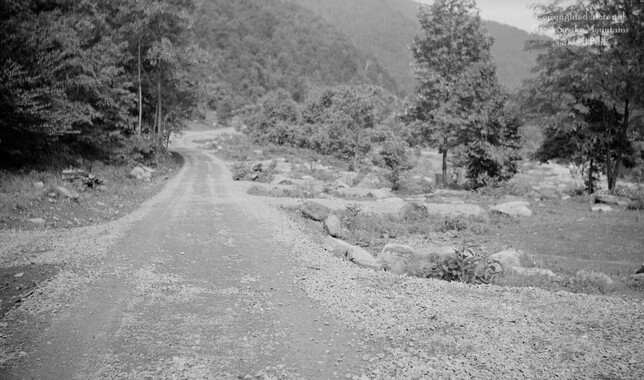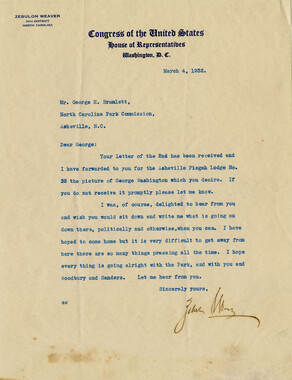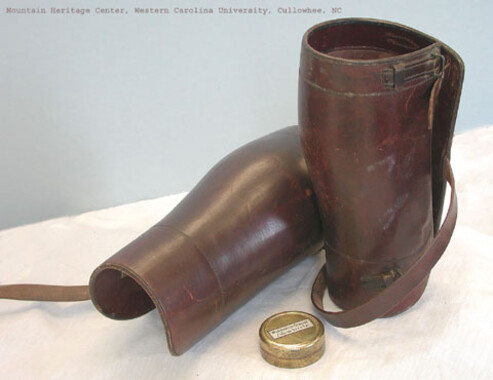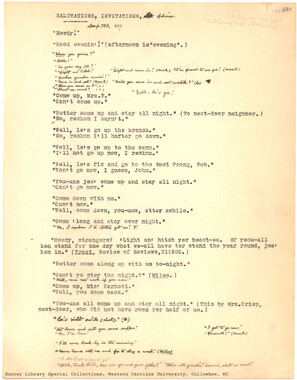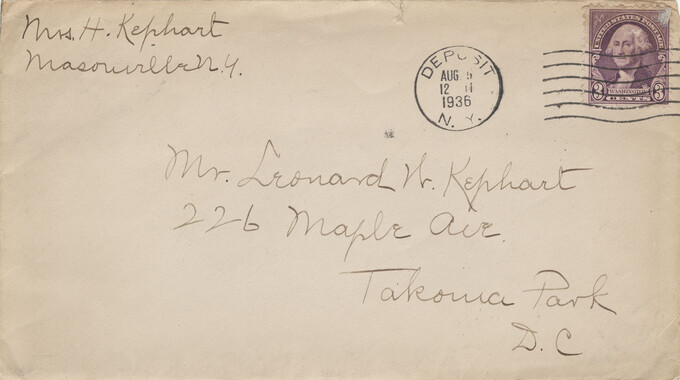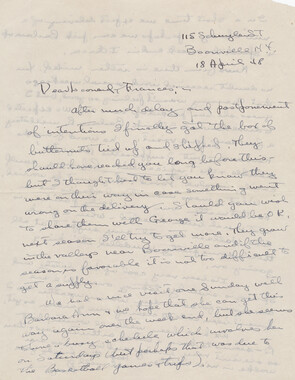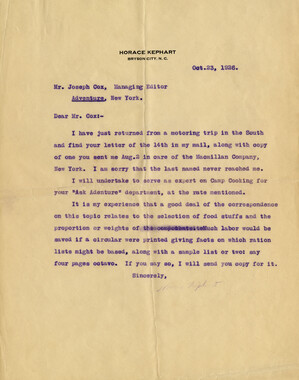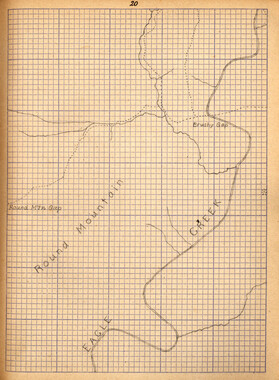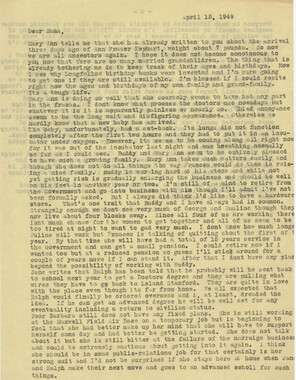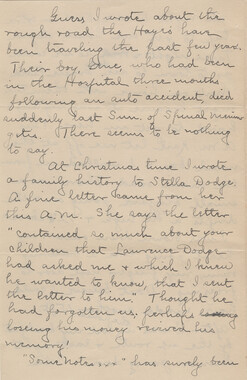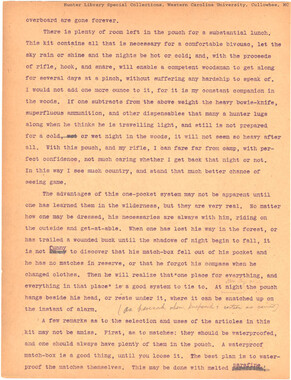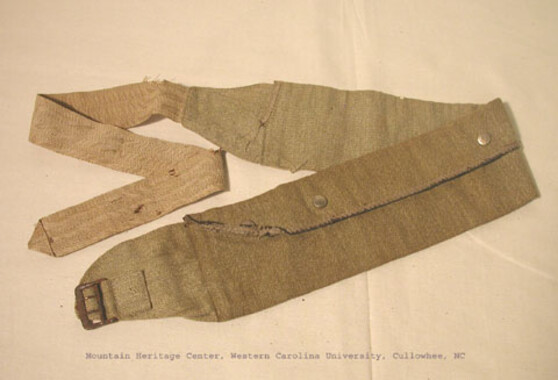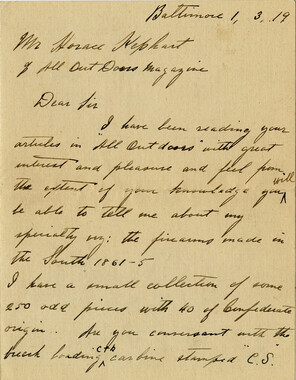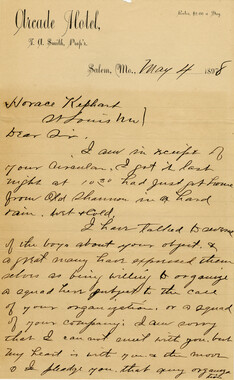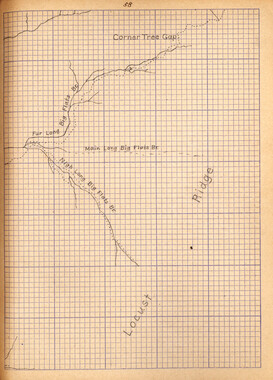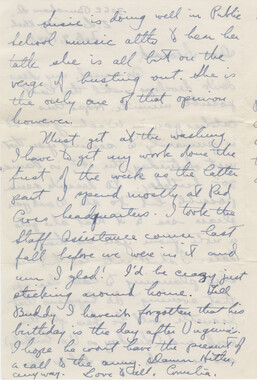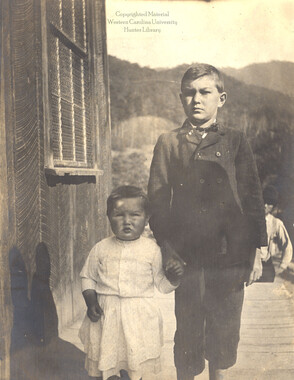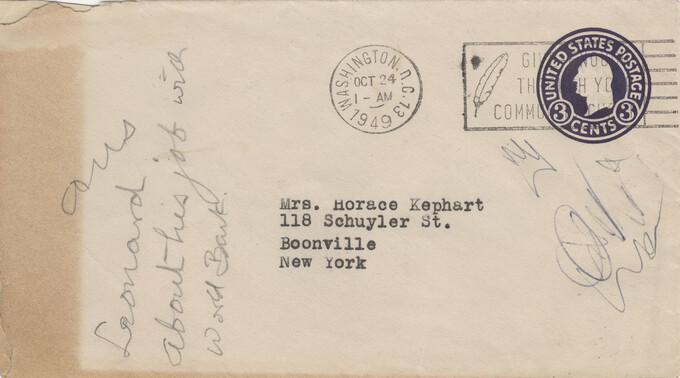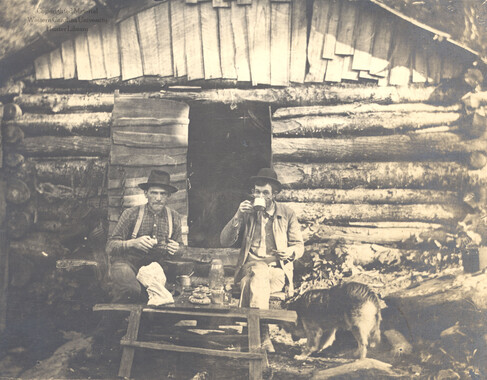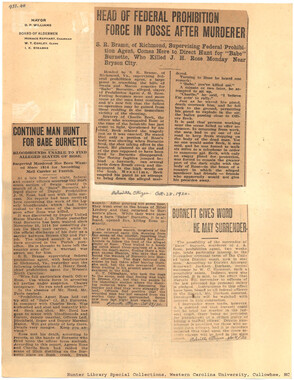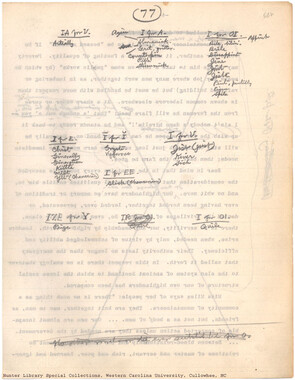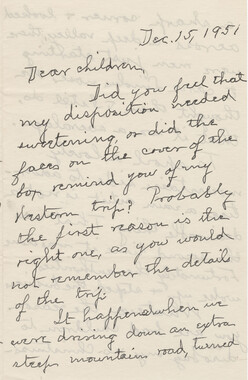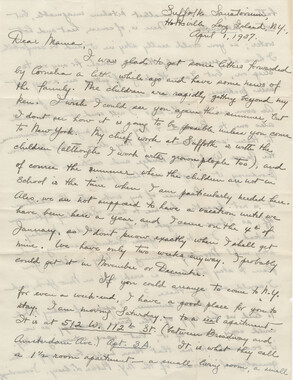Western Carolina University (20)
View all
- Canton Champion Fibre Company (2308)
- Cherokee Traditions (291)
- Civil War in Southern Appalachia (165)
- Craft Revival (1942)
- Great Smoky Mountains - A Park for America (2946)
- Highlights from Western Carolina University (430)
- Horace Kephart (941)
- Journeys Through Jackson (159)
- LGBTQIA+ Archive of Jackson County (85)
- Oral Histories of Western North Carolina (314)
- Picturing Appalachia (6798)
- Stories of Mountain Folk (413)
- Travel Western North Carolina (160)
- Western Carolina University Fine Art Museum Vitreograph Collection (129)
- Western Carolina University Herbarium (92)
- Western Carolina University: Making Memories (708)
- Western Carolina University Publications (2412)
- Western Carolina University Restricted Electronic Theses and Dissertations (146)
- Western North Carolina Regional Maps (71)
- World War II in Southern Appalachia (131)
University of North Carolina Asheville (6)
View all
- Kephart, Calvin, 1883-1969 (15)
- Kephart, Horace, 1862-1931 (290)
- Kephart, Laura, 1862-1954 (39)
- Masa, George, 1881-1933 (1)
- Thompson, James Edward, 1880-1976 (1)
- Weaver, Zebulon, 1872-1948 (3)
- Allanstand Cottage Industries (0)
- Appalachian National Park Association (0)
- Bennett, Kelly, 1890-1974 (0)
- Berry, Walter (0)
- Brasstown Carvers (0)
- Cain, Doreyl Ammons (0)
- Carver, George Washington, 1864?-1943 (0)
- Cathey, Joseph, 1803-1874 (0)
- Champion Fibre Company (0)
- Champion Paper and Fibre Company (0)
- Cherokee Indian Fair Association (0)
- Cherokee Language Program (0)
- Crittenden, Lorraine (0)
- Crowe, Amanda (0)
- Edmonston, Thomas Benton, 1842-1907 (0)
- Ensley, A. L. (Abraham Lincoln), 1865-1948 (0)
- Fromer, Irving Rhodes, 1913-1994 (0)
- George Butz (BFS 1907) (0)
- Goodrich, Frances Louisa (0)
- Grant, George Alexander, 1891-1964 (0)
- Heard, Marian Gladys (0)
- Laney, Gideon Thomas, 1889-1976 (0)
- McElhinney, William Julian, 1896-1953 (0)
- Niggli, Josephina, 1910-1983 (0)
- North Carolina Park Commission (0)
- Osborne, Kezia Stradley (0)
- Owens, Samuel Robert, 1918-1995 (0)
- Penland Weavers and Potters (0)
- Rhodes, Judy (0)
- Roberts, Vivienne (0)
- Roth, Albert, 1890-1974 (0)
- Schenck, Carl Alwin, 1868-1955 (0)
- Sherrill's Photography Studio (0)
- Smith, Edward Clark (0)
- Southern Highland Handicraft Guild (0)
- Southern Highlanders, Inc. (0)
- Stalcup, Jesse Bryson (0)
- Stearns, I. K. (0)
- United States. Indian Arts and Crafts Board (0)
- USFS (0)
- Vance, Zebulon Baird, 1830-1894 (0)
- Western Carolina College (0)
- Western Carolina Teachers College (0)
- Western Carolina University (0)
- Western Carolina University. Mountain Heritage Center (0)
- Whitman, Walt, 1819-1892 (0)
- Wilburn, Hiram Coleman, 1880-1967 (0)
- Williams, Isadora (0)
- 1880s (10)
- 1890s (29)
- 1900s (8)
- 1910s (138)
- 1920s (219)
- 1930s (33)
- 1940s (35)
- 1950s (15)
- 1600s (0)
- 1700s (0)
- 1800s (0)
- 1810s (0)
- 1820s (0)
- 1830s (0)
- 1840s (0)
- 1850s (0)
- 1860s (0)
- 1870s (0)
- 1960s (0)
- 1970s (0)
- 1980s (0)
- 1990s (0)
- 2000s (0)
- 2010s (0)
- 2020s (0)
- Appalachian Region, Southern (69)
- Blount County (Tenn.) (1)
- Buncombe County (N.C.) (5)
- Henderson County (N.C.) (1)
- Jackson County (N.C.) (6)
- Knox County (Tenn.) (2)
- Knoxville (Tenn.) (1)
- Macon County (N.C.) (1)
- Mitchell County (N.C.) (2)
- Qualla Boundary (1)
- Swain County (N.C.) (88)
- Asheville (N.C.) (0)
- Avery County (N.C.) (0)
- Cherokee County (N.C.) (0)
- Clay County (N.C.) (0)
- Graham County (N.C.) (0)
- Great Smoky Mountains National Park (N.C. and Tenn.) (0)
- Haywood County (N.C.) (0)
- Lake Santeetlah (N.C.) (0)
- Madison County (N.C.) (0)
- McDowell County (N.C.) (0)
- Polk County (N.C.) (0)
- Rutherford County (N.C.) (0)
- Transylvania County (N.C.) (0)
- Watauga County (N.C.) (0)
- Waynesville (N.C.) (0)
- Yancey County (N.C.) (0)
- Artifacts (object Genre) (85)
- Clippings (information Artifacts) (15)
- Envelopes (37)
- Glass Plate Negatives (5)
- Letters (correspondence) (366)
- Manuscripts (documents) (273)
- Maps (documents) (3)
- Memorandums (1)
- Photographs (195)
- Portraits (8)
- Postcards (5)
- Publications (documents) (6)
- Aerial Photographs (0)
- Aerial Views (0)
- Albums (books) (0)
- Articles (0)
- Bibliographies (0)
- Biography (general Genre) (0)
- Cards (information Artifacts) (0)
- Copybooks (instructional Materials) (0)
- Crafts (art Genres) (0)
- Depictions (visual Works) (0)
- Design Drawings (0)
- Drawings (visual Works) (0)
- Exhibitions (events) (0)
- Facsimiles (reproductions) (0)
- Fiction (general Genre) (0)
- Financial Records (0)
- Fliers (printed Matter) (0)
- Guidebooks (0)
- Internegatives (0)
- Interviews (0)
- Land Surveys (0)
- Minutes (administrative Records) (0)
- Negatives (photographs) (0)
- Newsletters (0)
- Newspapers (0)
- Notebooks (0)
- Occupation Currency (0)
- Paintings (visual Works) (0)
- Pen And Ink Drawings (0)
- Periodicals (0)
- Personal Narratives (0)
- Plans (maps) (0)
- Poetry (0)
- Programs (documents) (0)
- Questionnaires (0)
- Relief Prints (0)
- Sayings (literary Genre) (0)
- Scrapbooks (0)
- Sheet Music (0)
- Slides (photographs) (0)
- Songs (musical Compositions) (0)
- Sound Recordings (0)
- Specimens (0)
- Speeches (documents) (0)
- Text Messages (0)
- Tintypes (photographs) (0)
- Transcripts (0)
- Video Recordings (physical Artifacts) (0)
- Horace Kephart Collection (729)
- A.L. Ensley Collection (0)
- Appalachian Industrial School Records (0)
- Appalachian National Park Association Records (0)
- Axley-Meroney Collection (0)
- Bayard Wootten Photograph Collection (0)
- Bethel Rural Community Organization Collection (0)
- Blumer Collection (0)
- C.W. Slagle Collection (0)
- Canton Area Historical Museum (0)
- Carlos C. Campbell Collection (0)
- Cataloochee History Project (0)
- Cherokee Studies Collection (0)
- Daisy Dame Photograph Album (0)
- Daniel Boone VI Collection (0)
- Doris Ulmann Photograph Collection (0)
- Elizabeth H. Lasley Collection (0)
- Elizabeth Woolworth Szold Fleharty Collection (0)
- Frank Fry Collection (0)
- George Masa Collection (0)
- Gideon Laney Collection (0)
- Hazel Scarborough Collection (0)
- Hiram C. Wilburn Papers (0)
- Historic Photographs Collection (0)
- Humbard Collection (0)
- Hunter and Weaver Families Collection (0)
- I. D. Blumenthal Collection (0)
- Isadora Williams Collection (0)
- Jesse Bryson Stalcup Collection (0)
- Jim Thompson Collection (0)
- John B. Battle Collection (0)
- John C. Campbell Folk School Records (0)
- John Parris Collection (0)
- Judaculla Rock project (0)
- Kelly Bennett Collection (0)
- Love Family Papers (0)
- Major Wiley Parris Civil War Letters (0)
- Map Collection (0)
- McFee-Misemer Civil War Letters (0)
- Mountain Heritage Center Collection (0)
- Norburn - Robertson - Thomson Families Collection (0)
- Pauline Hood Collection (0)
- Pre-Guild Collection (0)
- Qualla Arts and Crafts Mutual Collection (0)
- R.A. Romanes Collection (0)
- Rosser H. Taylor Collection (0)
- Samuel Robert Owens Collection (0)
- Sara Madison Collection (0)
- Sherrill Studio Photo Collection (0)
- Smoky Mountains Hiking Club Collection (0)
- Stories of Mountain Folk - Radio Programs (0)
- The Reporter, Western Carolina University (0)
- Venoy and Elizabeth Reed Collection (0)
- WCU Gender and Sexuality Oral History Project (0)
- WCU Mountain Heritage Center Oral Histories (0)
- WCU Oral History Collection - Mountain People, Mountain Lives (0)
- WCU Students Newspapers Collection (0)
- Western North Carolina Tomorrow Black Oral History Project (0)
- William Williams Stringfield Collection (0)
- Zebulon Weaver Collection (0)
- Appalachian Trail (6)
- Forest conservation (2)
- Forests and forestry (5)
- Great Smoky Mountains National Park (N.C. and Tenn.) (18)
- Hunting (14)
- Maps (2)
- Mines and mineral resources (3)
- Postcards (1)
- World War, 1939-1945 (4)
- African Americans (0)
- Artisans (0)
- Cherokee art (0)
- Cherokee artists -- North Carolina (0)
- Cherokee language (0)
- Cherokee pottery (0)
- Cherokee women (0)
- Church buildings (0)
- Civilian Conservation Corps (U.S.) (0)
- College student newspapers and periodicals (0)
- Dams (0)
- Dance (0)
- Education (0)
- Floods (0)
- Folk music (0)
- Forced removal, 1813-1903 (0)
- Gender nonconformity (0)
- Landscape photography (0)
- Logging (0)
- North Carolina -- Maps (0)
- Paper industry (0)
- Pottery (0)
- Railroad trains (0)
- Rural electrification -- North Carolina, Western (0)
- School integration -- Southern States (0)
- Segregation -- North Carolina, Western (0)
- Slavery (0)
- Sports (0)
- Storytelling (0)
- Waterfalls -- Great Smoky Mountains (N.C. and Tenn.) (0)
- Weaving -- Appalachian Region, Southern (0)
- Wood-carving -- Appalachian Region, Southern (0)
- StillImage (296)
- Text (647)
- MovingImage (0)
- Sound (0)
Horace Kephart Journal 08
-
Horace Kephart (1862-1931) was a noted naturalist, woodsman, journalist, and author. In 1904, he left St. Louis and permanently moved to western North Carolina. Living and working in a cabin on Hazel Creek in Swain County, Kephart began to document life in the Great Smoky Mountains. He created 27 journals in which he made copious notes on a variety of topics. Journals 5 through 11 deal with various aspects of outdoor life and contributed to his popular book, “Camping and Woodcraft.” First published in 1906 under the title “The Book of Camping and Woodcraft: A Guidebook for Those Who Travel in the Wilderness," the 1916/1917 edition of "Camping and Woodcraft" is considered a standard manual for campers after almost a century of use. Journal 8 (previously known as Journal XX) includes information on identifying potential camp sites, using different types of tents, game and fish, camp cookery, pack horses, and winter camping, including sections on Arctic camping. Click the link in the Related Materials field to view a table of contents for this journal.
-
-
g .CAMP SITES. gl. ------ See also as. Camp Sites (f'ixed). Seelusion.- Natural ffiasking. Ease or covering trail(clirr; laurel thicket 'lith maze entrance). Assist by obstructj ons apparently wind-thrown, etc. Plant briars. LeTel Ground. Well tlrained. AboTe flood-line. Water. Fuel. Sunlight. Southern exposure best. l forning and evening light. 'aterd.als.- Straight trees, easily split. (Chestnut, ash, white oak, black birch, basswood, pine, cedar, etc.} Rocks, flat or cleaTable, fire-resisting. Clay. Saml. Browse. Pine knots. C,73 , 78. Breck,150. Kreps, 225 . Hanks,39-40. ~~~~~.JI7.J-: 1 kn4 . 2bel8 . 2b 11 • ~C) ~/ -~&I , 2b~ 63 (~· ~). ~/~}_,._ ,319. ~ 1 e;t,, 19 7 - 21/1.~ -~~~.,._if 3'~1 /rfl, Never p1tch a tent close under a big tree. ghtning and wind may not bother your tent, t they both have a way of raisino- hob with g trees. ( o...t-. 4f(c.t .) " WHEN)I.Y~EJ' _ THERE The first thing to do is to select a desirable location for the camp. Make "good water" and "good firewood" the first consideration, and have the camp in close touch with both of these. ·Choose a rise and never a hollow, and if there is shade it will be much better. Avoid dense woods or thickets. They are undesirable and unhealthy, to say the least. Find as level a place as possible, and put up the tent correctly. See that everything is staked down and guyed properly. When erecting a tent see that after it is guyed properly there are no wrinkles in it, and it is perfectly rigid. Drive your stakes in the ground slanting, not straight. Much depends on this, and a good tent is sometimes condemned when the real trouble is that it has never been properly erected. It would be well to dig a small trench around the walls of the tent to properly carry away the water. If a floor cloth is used, the tent will always be dry, and it will also serve to keep out the bugs and insects. After the tent is erected, unpack the kit and arrange everything in places most suited for the purpose, and in accordance with your own ideas. It will not take so very long to unfold your chairs, cots, table, . etc.; but if you are not able to have these ready-made comforts, it might be well to give you some hints about making furniture from nature's resources in a primitive way. Everyone does not have the knack of making things, but with a little perseverance and work and the aid of these directions, anyone should be able to provide all the necessaries and make the camp comfortable and convenient in every way. gal. ga. EXPOSURE. ) gb. SECLUSION. gbl. Harper, 377. JltM. ~, 171t. • r _.2 laf2. gel. gc. MASKED CAMPS. CACHES. e~·--~·~J . ----- ~ 1~.~· -tr. J•_eo /-~ Caches . -- C, 80 . Marcy,l06. rJluv...t. , -Jt.JZi:Ai , 7 7-,n.) -Y!: ' (J~ 2be9 . Jc~:.._ J.,~ ... ~'"''J· f/,49,..11. f , -#~,3j-J8-. 'l'HH: CACHE ON SKILAK OF PROVISIONS WAS LEF~ ( gcll. rg-c .• CACHES . See Marcy , l62-4 . Galton, 300-4 . Jt IJ"""' ott~~ ~ ~ ~~ 13-o prL /(;;!::" ~ ~ ~t..-t; ~-4;-~ ~ ~ .m~~ ..:...t-~~ ttr":lr~ .... c.~) !'1- ~<A:~-~~ .......... ~ 't;-~J..~ ~~} ~~~d:z., IbJr-()N-~ t;- ~-A-A. ~ftJ:- (1~.< -~~ -t~f ,J.u ~"- t .;; '1- ~ ;f:; ~- ?6, 'W-~ ! --- 4 {) ~ !<,?. .~. ~.- K.b,I I 311', 4'0"0 .. Jr, f1, 34'1. gc. MASKED CAMP.-- Mountains. gc3. Situation.- Away from natural thoroughfares, where neither men, cattle, nor hogs, would go. Nothing to attract herders, hunters, fishermen, distillers, g~nseng hunters, timber lookers, prospectors. InTisible from trails in Ticinity. Ingress and egress can be masked. Smoke not likely t~ ee noticed. (OTer.) Best position is on bench or south-fronting ridge coTered with laurel , entrance and exit closed by laurel half' cut with tops outward, or small scraggly dead tree d.o. Laurel thicket is eTergreen, and almost fireproof. Choose one containing enough large trees (preferably hemlock) to mask smoke. Get an abundance of' dry wood, split and stacked. Make enclosed fireplace to economize wood, for fresh cuttings will attract attention. If there is a bee-tree near, cut it down. Builtl another camp not too near, but a little more public . Build a fire before . it eTery day or two, freshen browse bed now and then, leaTe lit£er and fresh footprints, showing recent occupancy. This to establish a woods alibi. (over) :II.)( It '1('1: .... l_CUt-l * Jie,.,k"k. (_) 2e.c~ ~O!W /r-eM r Mr.1"'"Q\ (:.Ji:.. c. ..., . ( I .) gc. HIDE-OUT.- Clirf. gc5 . A flat-floored notch on a cliff, that cannot be reached from aboTe, and can be scaled only by ladder (cached below). Must haTe spring. To find such place, follow cliffs after fall of leaTes. Tall· hemlocks mask the place from opposite ridge, and preTent smoke from betraying it. ( See Hugo, in 4oH.D.,II,381-393. Lord & B. ,247.) Build beehiTe house. Large flat rock on top affords entrance, and can be left open for sunning, when occupied. Dry interior, with fireplace. Drain (coTered) acts also as air shaft and blower for fire. Large enough to permit man to escape by crawling. Wire netting screen near oatlet. LeaTe peep-holes, closed by rocks from inside. CoTer-rock fixed to fasten from within. CoTer with sodq and transplanted mountain myrtle (periwintle?) which grow rapidly. Mask approach below with greenbriar. Rock-paTed l~byrinth from trail (see Labyrinth in Standard Diet.) Hogs and bears cannot molest; skunks and snakes cannot burrow into it. Fireproof, and secure against hurricane, flood, lightning, intruders. Cache unnecessary. Dry walls and floor; heated comfortably with little wood. No light emitted at night. Intruder balked, first, by thorny approach; second, by need of ladder; third, cannot chop nor burn a way in, but must enter at greatest possible disadTantage (feet-foremost). While all this is going on, the occupant can escape by way of drain and hidden exit. I J g c . 11HIDING OUT. II J11aA/ut:l e~- @-..tl 1- .....,~.... 1- ,.......,L <>4 Jl;;7b ~ ~ ~~. -1.-.t. ~ ~-.).,... 1M::... .... t-(. <1- ,. f.. 1. '"' 1- ~· -n....,. k;.J, 1- ~ ,;;;;;;. ~ ta.- ~ ..;;;,._ -f ~ _.t;..,-.' 71-'<.. ,.. ........... ,.:4 - ..e!f+ ~(._:a;;. ..t...-.:. ~ .... ~- ~~.1.,-wt-:- - i~- {;, ' ... ,,_.! ?\o-. ~ ~~ - .... • '(>:lb. ~ e "' !;-' 1 • 4 -•-'• -- 1-.,..-.., "1-1 .. 1.. J......,f ·e ~ .. ,.. +-'I-~ 1~ 'r .t.-1- ~. fA.,.).. ~~- ,..c;;;....... 4w!- 1M.< " ~ ~. .. ........ Jt;;;.-jt- , ... ,.. ' ~ t """':1 ~ ,#,, .,.,. """'-'il wt> ~ .,l,... ~;:; ~t .-p.- 4·· "'· ~ ~;;..~_A- 4<.-.(.. ........,_ ~ 4.....,.-,~·.:J "'1t· .. ..:It: 4/i:t.~ t'l.. ~-~~ 'T L.../.--.-.,l. ~ "(-..t. "" .£. ....+ ~"".:!..,. gc7. - (ov0 gc9 . A camp may be floored with split puncheons conspicuously spiked to walls and sleepers. Two of these puncheons haTe only spike heads driTen in the usual places, and are remoTable. They are fitted with hidden fastenings to keep them f'irmly in place. This f'alse flooring con~unicates with a miniature cellar, rock lined, under middle of cabin. Boxes in this cellar can be sealed air-tight with surgeons' plaster or tire tape. Boxes to rest on rocks, and to be dried out thoroughly, as lvell as their contents, before sealing up. They are best made of' zinc. GalTanized buckets may do. I pre:f"er to build the cache separate from the camp, and hidden at some distance from it. Then, in case camp is discoTered and looted, or burned out, I will not be minus bedding and proTis= ions on next visit. gdl. gd. WATER. SPRINGS . See also a y .Water (fixed camp). is.Water I ndications. Springs.-- L.& B.,446-8 ,il l . To Locate a · Spring. Canoe cruisers a re often at a loss to locate a good sp ring for their over-night camp. On a recent trip down unfamiliar waters, I accidentally hit upon a plan that has never yet fai led me, and which I believe is worth passin g along for the benefit of brother canoeists. It is bri efly this: Paddle as near the shore as possible and with your hand over the edge of the canoe, test the temperature of the water. As spring water is the colder, you will at once note any change in tem- . perature. :\1any good springs enter the stream at, or even below, the water's edge. A cold spot once found in the st ream, and the r est is easy. Five minutes digging a few feet back from the water' s edge, and there you are. Smoke your pipe while it clea rs up. N. Y. R. E. V ANCE. (~. 4:J.,/911) gd ·SWAMP WATER . gd3. rr All the inhabitants here Cin New Jersey) were of opinion t11at t11e water in cedar swamps is wholesomer than any other drink; it creates a great appetite, which they endeavored.:)tp· :prove by sevel"al examples. .They ascribed this quality to t11e water itself, which is filled witll the rosin of the trees, and to the exhalations which came from the trees, and can easily be SIJlelled . The :people lil\'.ewise thought that the yellowish color of the water which stands between the cedar tl"'ees was owing to the rosin which comes out from the roots of these trees. They likewise all agreed that this water ms always very cold in the hottest season, which may be partly owing to the continual shade it is in. I knew several people who were resolved to go to these cedar swamps and use the waters f'or the recovery of' their appetite." · (Kalm, Peter. Travels into North America. London, 1772. Vol . II, pp . 36-37.) ! p r w t ( r r ge. WATER PURIFICATION, COOLING. gel. See also it.Alkaline Water. Wilson,854-5. Filters.-- Harper,263. L.& B.,445-6, 448-450,ill. Water can be partially f'iltered by straining through a clean cloth, but this does not remove noxious germs. To purify muddy water, take a good handful of grass, tie it roughly together in the form of a cone 6 or 8 inches high, dip the broad en~ in the puddle, turn it up, and a runnel of comparatively pure water will triclde down through the small end. If you have alum, take a lump of it in the hand and stir the water around a fmv times, until the mud is precipitated. Muddy water may be cleared by adding cornmeal to it and decanting after precipitation of the mud. Makeshift Still.-- L • & R • , 44-0, i 11 • W ~t ri1 ( dYOh ld l I I I [,mt r I ibr n1 r h Stagnant Water.-- To purify stagnant or putrid water, put powdered charcoal in it, boil, skim off the scum, and strain. Boiling disinfects and charcoal deodorizes. Cooling Water.-- l\rrap clothes around the water vessel, \Vet them, an~hang in a current of air, leaving the cork open. Rapid evaporation cools the water. If lake water must be used, in summer, when the surface is warm, fasten a weight to the bottom of a jug or large bottle, a stout line to the handle or neck, and another line to the cork. Sink in deep water, and then pull out the cork. To make warm river water palatable, pour it over tea-grounds and let stand a few minutes. SETTLING MUDDY WATER 0 NE of the most difficult and unpleasant 'duties that falls to the lot of the average outer, especially in the west and southwest, is the work of obtaining clean, fresh water for man and beast each time the tent stakes are driven or the tarpaulin spread. Take it along the Colorado River in the vicinity of Needles, California, for example. The water in that stream is simply a slow-stirr ing, sometimes sluggish solution of pumpkin-hued silt, sand and slop. Notwithstanding the uninviting nature of its make-up, however, t at wa er can e-Trans- J formed into quite a respectable beverage if the wayfarer happens to have a goodly bundle of outdoor know-how, secr eted about his per son. When you encounter a streak of muddy water, dip up what is needed for man and beast, place it in such vessels as a re avai lable, and treat it to condensed milk, in the proportion of twv tablespoonfuls of milk to five gallons of the water. Thus treated, the sediment settles in a ve ry short time. Next morning, if you desire to carry some of the water with you through the day, pour the clear water from the settlings, and then boil the water and skim it. In that way the cream and any possibility of sourness will be removed. Water thus clarifi ed remains palatable so long as it lasts. ~J,;.,.,. *-~lfiJJ.t- H. €. KEGLEY. ge3. ge. FILTERS. An excellent filter can be made from a small barrel placed inside a larger one, leaving :from 4 11 to 611 between the two. The inside one, without a bottom, rests on three stones placed in layers of sand, charcoal, and coarse gravel . The water flowing , or being poured into the space between the two, and having thus to force its way through these substances into the inner barrel, becomes purified. The water should be drawn off through a pipe running tlu~ough the oute1~ into the inner barrel. J 1~{ ~y..J ( Wolseley, Soldier's pocket-book, 259 . ) 1 / 1 1 _ ,.,...._ ~. ~I -11)<- ""' 1...f-.1Jf. ~~ ~ ~ ~ 4- ,._ ..f. . ,......'j ts'U ~ • ~ d:--: 1.~ ..J.,.:;~~~"ll du-. ~~ ~~~«.~~dwv~ JG7~~~ f~ ti.J~ 1 , 1 ~ tT' ~~~ ~ ,..d.t Q I J '0. I (t.rl',tt ~ I J j.q/t. ~L j ~ 1J;;.,.' .... .t ·~ 1 VI,.!-- ~I -.N ~ .,.. rd.M~- t 1?4!:* ~ ~ ,:;._. ~ rrkt.., ~rtz~~~M·~ ~~ ~ k-Jtz-~, ~;,... ~ 1--tA I '¢" ~ tn- ~ .;i1- • ...;, ~ ,... Jl;;:. ~ ~~. ~ ... ~ (>" ..... ~ )I;; -lwvJJ.. ::;. • Jt4 f!:vl ~ ~ J;Jti:: Ui3.:r ~ ~~ ~ Jt.:z ~ <j- ~ /if:-?:- J.w'r- b N k-t. p:z ~- 8J... .,k...... -Ji:;; ~If Jt<;L;fj. utr1r1: gf. ·woon-- Fuel values. C,83. Wilson,830. 2/t/t , ~~ 3# ~"~~~/o~~ / Breck,158. o2~ IR-(H4· J I It l\,1 t We 0r 1 rc u l, 1 't + I 1 c r I brar J Kreps,228. ~k4- 6. Hanks,43-44. 1/ww-~, hf. gfl. gg. CAMP FIRES. See also ha . cooking Fires . nn.Fire in Wet Weather. nx .Fire Fighting. ax.Fuel (fixed camp). Kn. il!e.. Winter Camping. Breck,159. Kreps,90, 228. Indian Fire.-- Breck,161. Combined Camp and Cooking Fire.-- 2bl19,ill. ggl. Nessmuk,48. g};bl37, lf~,/..2_ · To Beat ~ Tent Without Stove • -- Ha)tks, 45. ~ 1 ~G., !J43, · <JR, ,.;.-t-. 't ?', 101~ ...-()a "h:t. J• ~~,- ~I JoL.i-, ,,,~, Top Fire.-- An excellent all-night fire . Cut two hardwood logs not less than 12 inches thick . Lay them parallel, about a f oot apart. ~1\.cross them lay two hardwood "hand junks" not less than 8 inches thick, and onr these pile your dry wood and set it afire . The coals will dr6p down between the bed-logs and keep up a steady heat. Have s pare logs with which to rebuild the fire towards morning . (Hough in F .& s ,, Oct . ll ,' 02 . ) See ill . under ha ~. Camp-fires prohibited in New Hampshire.-- U{~,.;:uc.~,~1f! l. J».f;rw~,jl"'•,..~ '1'!1>~~#~ A.Aec.tf'(.-.M..,II<- ~ .... p-,........~•4, Jl.:i:>~ .. ~~.,U..,.{4(. Ac1 ft;:d .-.c.<-.,;:x:r;l.. ~. Use of standing timber forbidden in New York.-- Harper,171. Kindling .-- C,86. Hanks,43 . To Light a Match in W~nd .-- C,88. To Light Wet Matches.-- (/(,vJr~ ~ fv'- ~ ~- ~.at;;;::..~~~ To Kindle a Spark.-- Wilson,830. To Make a Fire Burn All Night By A. T. STRONG T HE question of keeping a fire _burn~ng all night is often a ser.ious one to the camper, especially in cold weather. This difficulty may be remedied very easily. If your stove is of the large ''box" type-one capable of taking a stick of wood eighteen inches or longer-so much the better. An hour or so before "turning in" time, clean out the greater part of the ashes from the firebox (taking care to save a quantity of the live coals on a shovel or tin pan) and slide a block of green hardwood, six or eight inches tljick, and cut to fit the stove rather snugly. in on the r erernain ing ashes. Now dump the coals you have saved in on top of the green block, get the fire going good, and then just before retiring for the night, pack the stove full of hardwood and shut off most of the draft. If you have made a good job of it, you not only will sleep warm, but also will have plenty of coals for cookmg breakfast. For the open fire: dig a shallow trench, eight or ten inches deep and large enough to accommodate three or four small logs. Put a layer of green logs juto the trench. Have them just a trifle more than flush with the surface of the ground. Build the fire on top of these, pi le on plenty of ha rdwood logs (all placed the same way, which should be at right angles to the front . of · the tent or open camp) and get a good night's sleep. ~e.- Q?'U-!;:f / /? /~ • Heating the Tent in Cold Weather. dH>Iltn- ~::/#- ~-;19 1 6 .. Editor Outdoor Life :-Get a piece of sheet iron (stove pipe iron will do) about two feet wide by four feet long. Cut a cross at one end and bend up the points. This makes your stove pipe collar and smoke hole. Also the top of your stove. Build up the sides of stone plastered up with mud. Have the sides thick to hold lots of heat. If no stones, then dig a trench and lay your sheet iron over it. You can use long lengths of wood by "niggering" them off. You can cook and bake with your reflector baker with a good bank of coals in the open end. There should be a damper in the pipes of all stoves, and considering the weight and bulk, this is the best heater of all. I saw a stove knocked together last year in a "pearl fisher's" camp on a Wisconsin river that struck me as unique. It consisted of a sixteen quart galvanized iron pail turned bottom up. A crosscut in the bottom as per the above sheet iron top, a few lengths of rain spout for stove pipe, a hole cut in the side and the piece wired on for a door. The material was picked out of a junk pile and answered the purpose of warming the t ent night and morning, and considering fir st cost , it was 0 . K. For my own use the past summer in a 7x9 wall t ent, I have used an open bottom "knock down" sheet iron stove 14x17x12 inches with the front door full size. For my reflector baker I used two elbows and passed the pipe out thru the ends of the tent, as it goes against my grain to cut a hole thru a good, tight, waterproof canvas roof. The pipe is wired to an upright set in the ground outside. This post isn't driven in the ground, but a hole is dug, the post inserted and the dirt tamped solid. Wisconsin. A. F. WALLACE. gg. DANGER FROM FIRES. gg3. "Light a match on horseback and let it :fall upon d.:ry pine-needles. Throw a cmgar among dry leaves or t~u~:r . Fire a. gun so the combustible wad will strike some dry maple-punk . start a camp-fire against a tree, an old log, or upon :peaty ground, thl"ow several pailfUls of water upon it, leave it, and then bring your pupil back a week a:ftel~ard to see mile a:fter mile o:f blackened :forest and hear the roar and crackle o:f his little camp-fire as tree after tree :falls before it. Take him into the unburned forest and show him the millions upon millions o:f little seedlings devoting their plant-lives to man's service. Then by the touch o:f brimstone consign this host of :fl'iends to the :flames . 11 '- (H.R.Ayres, Garden and Forest, VII,l72.) ~4 ~- ~_./H-11£, ~ J-'l ri t 1 I ·' Precautions.-- L.& B.,4.81. ~ ~~"JidV-,~ .32-.5~ Danger or Forest Fires.-- Harper,170 . Kre ps,272. by these "accidental" camp fires is one of the best remedtes. I have a friend who owns a ranch along one of the famous Idaho trout streams; it has a fine little grove, a tempting place to camp. In one year he had two disastrous ~;~s, :~~h f:fise~h~ft ca:;~~ssi~ahy~ grove and made their get-away before he knew they were there to camp. The two fires cost him close r-:,..-...-_,......:..--:"~~~~_;:.'-:"'::--""":""' to $4,000-and, unfortunately, he from their ruined homes; while the couldn't catch the miscreants to propert7 loss ran into millions. see who they were! Most o these fires were caused by Sometimes the neglected camp careless campers, who did not put fire does !ts deadly work on the out their fires I I wonder what the fire-builder or his family. A Day of Judgment will bring to friend who took his family out to those fire-builders! . the Big Wood Rivet, a famous "SAFETY FI:i.l.ST" WITH. CAMP FIRES By Chas. J. Lisle It should not be necessary to urge any sane man to "Put Out The Camp Fire Before You Leave" -but with the close proximity of the fall shooting season, when thousands will take to the fields and the forests for birds and big game, this war·ning can hardly come amiss. Don't build a big fire-that's foolish. You can't get close enough to a big fire to cook your food well; three times out of every four you'll burn at least part of the meal. Don't build a fire against a big log-green, half-green, dry, or even rotten. You can't tell how wood will act in conjunction with fire. A log may smoulder for a night, or for a week, and then burst into a blaze-after you thought the fire was dead for ever so long. Don't build a fire where a tree has fallen and rotted away. Some of those old punk piles will carry fire for an unbelievably long time. And when you think it is only dying steam that comes up after you have deluged the blaze with water, scme of it is likely to be real fire that may break out after you have moved over into the next county. Don't camp in a bed of leaves. They are devilishly deceptive in their coquetry with fire. They might rout you out of bed in a hurry, at night, with your blankets afire-though that would be a minor calamity beside starting a great forest conflagration-like the forest fires in Idaho four years ago, that burneJ to death almost 100 people, and drove hundreds Don't ever leave your camp, for Idaho trout stream, had a little an hour, for a day, forever, with- camp fire to heat the coffee for out putting out the last vestige of dinner. They thought they had fire. If you have been reason:~ble put out all the fire; and the sixin placing and maintaining the year-old girl was playing around fire, there won't be much to do; where the fire had been. One for you'd have no surplus fuel neglected ember set fire to her within reach, and the blaze would dress and burned bet frightfully. be small enough to die out as soon A long siege in the hospital, some as you were through cooking. If painful skin-grafting, a ~500 doctor you are near a stream, carry water bill, and almost a mtllion-dollar and pour over every stick and coal. funeral and lifelong regret came If it is a dry camp, scoop sand or from this one little neglected camp earth over the place, scattering all fire that the man said he had the fa!;ots, and see that no fuel is "put out!" left wtthin reach that could pos- Only individual care will keep sibly become ignited. If you are down the fire menace, and make in the rocks, a minute's work will life and property safe, as well as wall in the fireplace so that no game more plentiful and easy to fugitive blaze can get away. But get; and make the laws more wherever you ate, PUT IT OUT! toletant of the intruding hunter. A fireplace built of stones is al- A rope or a bullet. seems so much ways good to cook over-and it is quicker than the law, and so much almost certain to be small enough more sure and appropriate, for the that no great quantity of fuel can careless trespasser who sets out a be put in. If one has a big camp fire that harms the public or the knife, a fire-hole can be dug in the individual who is innocent. No earth, that will work very nicely wonder that the tr·espass laws are if there are no stones at hand. A getting more strict, as the fence· good stout wire, to string between cutting, gate-opening, fire-building, two stout stakes and to carry the "didn't-know-it-was-loaded" gang kettles over a fire built on the take to the hills to ravage and to level ground, is not so bad. Some have a little "fun" without conof the dainty little pocket camP. sidering the rights of others. cook outfits are "as good as gold, ' Put out your fires, shut all the for the small camping party; one gates you open, be absolutely cerwould hardly need to be told to tain what it is before you shoot at build a small fire for one of these! anything-and you won't be a pubIt would be almost a rational law lie menace, like a skunk or a to require all hunters to use only "typhoid Mary" or a smallpox these, or JlO to jail-for they allow refugee. Be a sportsman! only of 'Safety First" fires I A Filipino woman with one of her little hand-made clay firepots would cook a full course meal on as little fuel as most campers would cut up for kindling to merely start a camp fire-and nobody ever heard of a Filipino thatched nipa shr.ck, as dry as tinder and almost explosively inflammable, burned by a fire that got away • from its builder. The excellence .l of camp cookery, the safety of the t • party and the peace of mind, if not the lives and prOperty of the whole mountain and forest country, is in inverse ratio to the size of your ,.... camp fire. A penitentiary sentence is none f\ too heavy for the leaving of an unguarded camp fire. The National Forest Service is making a notable educational campaign in all the national forests, to teach the rational use of fire; and some of the timbered States are going even further in the way of patrols education, fire-fi_ghting service, and penalties for offenders. Financial responsibility for damages caused --·--------- ·- . w,....., I At: 1 k·~ -d ~ r- )z ::.J. -#.t.\Aw ;"lt" 46 , """ "" &U.. ..., e, _,. .b ..: ;;.. ) 1<-4 ' r-~,. .., t._:J -t - · 11 1-- 1 '(...(..&,. ........ lv ) gh. PITCHING WALL AND WEDGE TENTS. ghl. See also at. Pitching Wall Tent (rixed camp). ok . Knots and Lashings. C,73. Breck,152-3. 1bl1-2,ill. 2bl18. ~.J~, ~ ~ -'h~3. a+J,.-, Kreps,85,ill. 2-'b~33. Hanks,48. Cut the p~ two reet long, to get a good grip on the earth, and let them project as much as heedrul so loops will not slip orr. A notch limits length of peg, and makes it harder to strike the tent. ~~ --A r;:<;J-.. ~~ t'j-~Ad;~- ________, Ftrst, you cut some tent-pegs and a _ crutch for the rear of the tent. Never 1t.1- tYtrlciv -4--~· - ~"""' ·~ !;-.~ ,._.( A.h- • .;. --;:> use a crutch for the door, however, as it ~..At, ~'ltv- .t- ..1 ~ .+ 1 ........... ~ :d/J., d.s3, is i.n the way an~ does .not a llow for the ~$>)~.- .z/'(/12. , 11~/111• 4<- /01. I. ~- - ~1 QJ1, , a-If - JJ/3.,.4f. -iM-~ "~ -~~ -~~~;;; o, ;..RL, ~ ' . - - eastest means of ttghtenmg the tent ropes. Much the best manner of putting up an A tent is to use two poles tied together to form a crutch or shears. In this the ridge-pole rests. You can then enter or leave a tent without damage, and, when the tent slacks up a bit, you simply raise up one end of one of the front poles and lift it a few inches toward the center of the tent door. An A tent should be laced together and pegged down before you put up the ridge-pole, a fact not generally considered. - c2J,2AJ, ~~. (11.KJ.,~-; /i!f1S-:) gi. PITCHING PYRAMIDAL TENTS. gil. Frazer Tent.-- liz2. ( J' r h , J'v it< We>+ rr( d h.dlll r1h r w r gj. PITCHING CON1CAL TENTS. gjl. Sibley Tent.-- C, 75. Drill Reg. for Hospital Corps, 131. Teepee.-- C,75. Harper,206. Teepee Fireplace#-- A.F.Wallace,135,ill. ""' t 1 ( L >l 1 T' V lt Iutr 1 .n gk. PITCHING BAKER TENTS. Breck, 65, 154,111., and frontisp. 2b16. gkl. r gll. gl. PITCHING OTHER TENTS. Forester Tent.-- See brl. gml. gm. TENTS ON ROCK, SAND, etc • .,_g, C,76. L.& B,,57,ill. 1\ When the camp is pitched for some time on the sandy beaches of the South it will pay to go to the extra trouble of making a board floor and to pitch the tent up higher than usual to give better ventilation. A cheese cloth net to keep out the mosquitoes is a necessity . · gn. DITCHING TENTS. SUNNING TENTS. Wilson, 825, i11. ~~ e~, .!id?.:£1. 2be18. Sunning Tents.-- Harper,?.3j • gnl. got. go. BEDS OF BROWSE, etc. See also cj.Browse-bags. C, 24. Wilson,828. Seneca,124. ~~~'+~ To make.-- C,76. Harper,68,ill. C.O.B.,21. Breck,155. Hanks,46. Kemp, 122. '-.1§3. ~,~ 1;a..~.1.1J,~ . ~../? IJI.J(;;w, 1~6, .<!!. ~ - " ~* Hw ~.; S"''- 6~.~ A, "Balsam fir boughs make the best bed of all beds; the tips broken of:f short and laid shingle'"":fashion, bottom-side up, from head to :foot.''Next: :firs, hemloclc, juniper, cedar, pine , (W.N.B.) in the order named. Cherry, willow, alder., or any such shrubs, :follow next. (W.N.B. in F.& S. ,xxvi,307.) Leaves or pine needles are warmer.-- 2ch6. ~'I"~~(. ()wu..(-~,- ..2-d /. 0'~- 0/l, J-w '-Y;It61. ~.-(f(J...J/ #"·:ly~Ap. pr + \If nl \II; t ( "' l , "1tu I It r 1 r r gpl. gp. SYSTEM AND TIDINESS IN CAMP. . ~--- ----- - See also~ Place. C,73, 77. ba.Camp Conveniences. Breck,124, 127, 151, 162. bb.Camp Sanitation. ot.Washing Clothes. 2be17, 19. 2g1-6. 2n28-29. .2 'Pe .1.11. ~,IS1- ~1 117-19- ~, ~..,, q~-. ~/(3/;,.M:Z. . I J'f/. Fencing Camp.-- C,78. Care of Provisions.-- A.F.Wallace,l26. ( p r 0 t \fd er W t r ! < • h 1 ''I ih] Iutr1r gp3. gp . SYSTEM AND TIDINESS IN CAMP. "There is a business-like air about (our camp) which shows that some of its inmates have lived from early youth in the wilderness, and have long learnt all the triclcs of the backwoods to make themselves as comfortable and cosy as circumstances will permit. In suoh a oamp it suffices to cast a glanoe at the manner the tent ••• is stretched; a look at the way the rifles are secured on stout pegs driven into a handy tree, and at the manner in which the fire is made up so that the wind does not drive the smoke in the direction of the tent, to show that it is not a 'tenderfoot's' camp • ••• Every article of this camp, as we have seen, is in its place, for the due observance of t11e old axiom that it is just as easy to put everything in its proper place at the start, rather than just drop it anywhere, saves in the end time, trouble, and temper. The dilemmas caused by untidiness in this respect are often most vexatious, and never more so than if during the night a smowstorm oovers the ground unexpectedly with half a foot or a foot of snow, as I have seen it do on many occasions. Where are you next morning? In the tidiest of camps it is not an agreeable fix to be in, but in an untidy one it means -well, to put it mildly - some lively recrimination, hard language, and the loss of half a day or more in digging up the hundred-and-one oamp belongings scattered in a wide circle all over the place, while another half day will have to be spent in drying the ropes and blankets and saddles before the fire ere they can be used. What wmnder, therefore, if all old hands are punctiliously tidy, and that they can lay their hands, blindfolded, on the canister containing the seck stock of precious matches, or on the whetstone whereon to sharpen their skinning knives, or on any other small 'iota' you like to mention." g p5 . gp . A GREENHORN'S CAMP. "At the end of three hours• flusteration, heat, worry, and good hard work, he (Dick) had accomplished the following results: A tent, very saggy, very askew, covering a four-sid:ed area- it was not a rectangle- of. very bumpy ground. A liodge-podge bonfire, in t he centre of which an inacceRsible coffee-pot toppled menacingly, alternately threatened to ignite the entire surrounding forest or to go ou~ altogether through lack of fuel. Personal belongings strewed the ground near the fir·e, and provisions cliunbered the entrance to the tent. Dick was anxiously mixing the batter for the cakes, attempting to stir a pot of rice to prevent it from burning, and trying to rustle suffieient dry wood to keep the fire going. This diversity of interests certainly made him sit up and pay attention. At each instant he had to desart his flour-sack to rescue the coffee-pot, or to shift the kettle, or to dab hastily at the rice, or to stamp out the small bi~sh, or to pile on more dry twigs. His movements were not graceful. They raised a scurry of .dry bark, ashes, wood dust, twigs, leaves, and pine needles, a certain proportion of which found their way into the coffee, the rice, and the sticky batter, while the smaller articles of personal belonging, hastily dumped fi•om the duffel-bag, gradually disappeared from view in the manner of Pompeii and ancient Vesuvius. Dick burned his fingers and l'ltumbled about and swore, and looked so comically-pathetically red-faced through the smoke that I, seated on the log, at the same time laughed and pitied. And in the end, when he needed a continuous steady fire to fry his cakes, he suddenly discovered that ·dry twigs do not make coals, and that his previous operations had ul'led up all the fuel within easy circle of the camp. So he had to ~rop everything for the purpose of rustling wood, while the coffee cnilled, the rice cooled, the bacon congealed, and all. the provisions, cooked and uncooked, gathered entomological specimens. At the ~ last, tho poor bedeviled theorist made a hasty meal of scorched food, brazenly postponed the washing of dishes until the morrow, and coiled about his hummocky couch to dream the nightmares of complete exhaustion. Poor Dick~ I knew exactly how he felt, how the low afternoon sun scorched, how the fire darted out at unexpected places, how the smoke followed him around, no matter on which side of the fire he placed himself, ho~ the flies all took to biting when both hands were occupied, and how they all miraculously disappeared when he had set down the frying-pan and knife to fight them. I could sympathize, too, with the lonely, forlorn, lost-dog ~eeling that clutched him after it was all over. I could remember how big and forbidding and unfriendly the forest had once looked to me in like circumstances, so that I had felt suddenly thrust outsmde into empty spaces. Almost was I tempted to intervene; but I liked Dick, and I wanted him to do good. This experi~nce was harrowing, but it prepared his 1nind for the seeds of wisdom. By the following morning he had chastened his spirit, forgotten the assurance breathed from the windy palles of the Boy Trapper Library, and was ready to learn. Hat!e you ever watched a competent portraitist at work? The infinite pains a skilled man spends on the preliminaries before he takes one step towards a likeness nearly always wears down the patience of the sitter. He measures with his eyo, he plumbs, he sketches tentatively, he places in here a dab, there a blotch, he puts behind him apparently unproductive hours-- and then all at once he is ready to begin r::omething that .will not have to be done over again. An amateur, however, is carried away by his desire for results. He dashes in a hit-or-miss early effect, which grows into an approximate likeness almost immediately, but ·which will require infinite labor, alteratiori, and anxiety to beat into finished shape. The case of the artist in making camps is exactly similar, and the philosophical reasons for his failure are exactly the sam . The the super~cial mind a camp is· a shelter, a bright fire, and a ·smell of cooking. So when a man is very tired he cuts across lots to those three results. He pitches his tent, lights his fire, puts over his food-- and finds himself drowned in detail, like my fr~nd Dick." (Stewart Edward White, The Forest, pp.~7-40.) . 't gql. gq. GAME AND FISH-- Dressing and Keeping. ~feasuring and Computing Weight of' Game and Fish.-- . See also nv.Measuring. mY • Weighing. Game.-- C,109. Breck,359. Weights of Fish (table j. -- Seneca, 113, 114. of{,(5J.'.2-f, 9!l:JI. Estimating Weight of ·Fish USUALLY and humanly most anglers overestimate the weight of the fish that they take. What is a good rule for accuracy in such matters ? I have heard it said that a twelve-inch brook trout ought to weigh a pound; but there are very few brook trout that really weigh a pound at that length. The average weight of a twelve-inch brook trout is only eleven and one-quarter ounces. The same species twenty-four inches in length will weigh about four pounds fifteen and one-quarter ounces. A twelve-inch grayling will weigh about ten and three-quarter ounces. A twenty-four inch grayling is scaled to weigh five pounds five and onehalf ounces. You think there never was such a grayling in all the world? That is quite true; indeed, there are few grayling known to-day to the modern angler, for the species is extinct in the Southern Peninsula of Michigan, where once it reached such beauty. There are, however, grayling in some of the Rocky Mountain streams. Two pounds in weight is not extraordinary there. · I heard of one grayling taken recently which was reported to have weighed three and one-half pounds. I saw one grayling alive in a certain Western preserve which I believe would have weighed four to five pounds; it was a monster grayling such as I have never myself seen taken in actual angling. Let us hope that it will long flourish. It has long been known and marly have tried to take it. A twelve-inch black bass will average two pounds in weight. Above that length the bass increase in weight very rapidly, so that a fifteen-inch specimen would ordinarily weigh three pounds eight ounces. Small-mouth bass weighing six pound eight ounces have been found to measure only twenty-one and onehalf inches in length, but to have a girth of sixteen and one-half inches. Therefore, if you have with you no scales but do have a tape line you may save your conscience, if you care to do ·so, when you tell about yol!r specimens later on. I ' • gr. TOTING GAME. C,lOl. 2au9. Brecl{, 353. 2grl-8,ill. ~,ar. 2n3. On horseback.~- L.& n.,582. ANOTHER WAY TO TOTE A DEER THE way John K. Cullum carries a deer as d~scribed on P<l:g~ 36 of RE~REATION for }anuary, IS good, prov1dmg there IS no climbing to do. Then the weight on t he back of the neck and the hands being occupied makes it impracticable to do much climbing. M:y way to carry a big deer is to put him on a!l .1magmary stoneboat, and drag him. By n ggmg ~p a harness arrangement with a piece of :ope, tymg: the fore legs to the jaw, and hookmg onto hts horns so as to lift his head well off the ground, I can snake a pretty big one right along. And to ca:ry ~ small one, especially on an up and down htll htke,. over windfalls, etc., I want the load low down on my back, like a pack. So I proceed as follows : After dressing him out cut the skin around each fetlock (between th~ hoof and the dew-claws), slit the skin of each between the dew-claws up to knee or hock skin the leg to this point, unjoint it and throw ~way Then tie the skin of the off front leg and of th~ near hind. leg together with a square (not a granny, mmd) knot, and the others likewise. The dew-claws w1ll prevent the knots slipping. Get the deer on. a log, stump, bank or rock, turn your back to It, put your right arm through under the nearest front leg, left under the hind one, h~nch . into your load and get up. Your deer w~ll nde ve.ry well now if you steady the head With your nght hand. . Better still lash the head up snug by tying it down hard a~d fast to the off fore leg, of course doing this before you load up. Any deer which dresses out to weigh somew~ ere around a hundred pounds can be carried th1s 'Yay by a fairly husky hunter a lot easier th~n. m any other manner. At least that is my opm10n. I confess I have not toted a carload of them. STANLEY SNow ( ~- ~/fH~-) ~ ~ A GOOD WAY TO PACK A DEER. Cut off the l egs at knee and hock joints. but skin out for e legs from hoof up. Unjoin t legs. Tie skin across right hind leg, left forelegs together and left hind leg-right forelegs togeth er. Slip your arms thru b e tween leg s, square your shoulders and he's on to stay.-C. E. Smith, California. grl. Toting a Deer By ] OHN,K. CULLUM: ON my deer hunting trip last fall I saw no less than three different deer carried slung on a pole, between two hunters-j ust about the most awkward, foolish way to carry a deer that I know of. And I saw one dragged in oR the snow, by a rope tied to its head, the fore legs being tied up to the lower jaw. It did me good, therefore, when I got my deer to be able to show some of these hunters how a really nifty hunter can pack his deer. No, I didn't do it myself, so no exception can be taken to what I am telling. It so happened that I had the assistance of a smaller man than myself and a fe llow who had never carried a deer before, to demonstrate the method-not my method, but a very old one, which I picked up from another hunter long ago. Having bled my deer-by "sticking" it in the old-fashioned hog-killing way, at the base of the neck, not trying to sever the head, as I saw one treated-and dressed it out, all quickly done and without the necessity of hanging it up, I dragged it to a ncar-by stump and lugged it up onto this stump and propped it lying breast downward, legs hanging. As it lay, it weighed about 160 pounds, perhaps even more, for it was a nice, husky white-tail buck. "Now," said I, to the three hunters who had arrived on the scene, having heard my shot, "I am not as young and spry as you fellows, and I know you are figuring on helping me get my deer to camp. I'll make you a proposition. I'll teach you each to carry a deer the way a real deer hunter does it, and when you have each toted this buck as far as you want to, I'll carry it the balance of the distance." "Gee, Dad, don't start any of ti1at," said the youngest of them. "I don't want any blood on my clothes, al'\d I don't pose as any Atlas, either. Let's cut some poles." You have already guessed that he was not my son. He was plenty big enough, and as for his objecting to getting blood on his dothing I have known few r eal hunters who were ashamed of a few odd blood-stains on their old togs. However, I let him out right there, and changed coats with the smallest of the three of them, a young lad of eighteen or nineteen who will be a woodsman in his day, short of leg, close coupled, and with a quick, handy way about him. "Now, my boy," said I to this one, "just you back up to this deer and squat you down so his left side ·comes against the back of your neck; '!lass your left arm around under his left hind leg, your right a round under the left front leg, like puttin g on a coat, give a hunch or two to settle the deer strongly on your shoulder s, hang on tight to those legs and then get up." H e did it as quickly and neatly as if he had known how-but he afterwards told me he had not. "Now off with you," I said. "I'll bring your r ifle. If you fall, dump the deer so it doesn't fa ll on you. You'll travel best at a sort of slow trot, the way a levee nigger carries a ra ilroad tie or a .barrel of salt- if you know how that is." Off he went, down the hill and through the soft woods, as nimbly as you please, leaving us all behind. One would have thought he had carried hundreds of deer. And I heartily wished I had tied my big red bandanna across the deer, for fear some fool might take a shot at him. By the time we came up with him, where he had stopped to rest with the deer on a convenient boulder, he had gone the best part of a quarter of a mile and was ready to start on again, which he did-said it was good fun. To make a long story short, the boy and I carried the buck in between us, changing off. And you can bet that I helped that boy get him a nice hue)< for himself before I left. As for the other two they proceeded with their hunting when they' saw it was not going to require four men to get one deer to camp, and I have never seen them since. I like to think, however, that they each take pride in the fact that they now know how to carry a deer. gr. G.AlfE, To Carry, an.d Dress. It is no more necessary to hang up a deer to dress it, than it is ·to hang up a moose, a caribou or an elk And, by the way, one man can carry any average deer on his back easier than two can carry it on a pole, or even two poles. -- ~"'-- ·J ~-~_ ICJIO THE TEXAS WAY. To CARRY a deer, first gralloch it, then drag it up on a log, a stump, a rock or to the edge of a bark, and prop so it will lie bre~st doyvn. Squat close so the back of your neck IS agamst the side of the carcass, put one arm under the near front leg, the other under the near hind leg, hunch the weight of the animal onto Y<?Ur shoulders, and get up. Let your knee gtve with each step. Better hang the deer where shot, if possible, and carry it out when it has become stiff. Meantime, get a cow bell and hang it on your deer when yo~ essay to carry it throuah the woods. Otherwise some chump that "sh~ots at sight of hair" may shoot you out from under. gr3. - ~ - To get a big deer out of the woods is a hard job for two strong men. If you are coming for your deer soon you do not need to even hang it up, but it is best to do so. The common way is to pierce the gambrels with a crosspiece and swing it up by the hind legs; but a deer will keep better and drain better and shed the weather better if hung up by the nose or neck. If you have to drag your deer out to a trail hang it up there. If you leave it in the bush have a blazed trail so you will be able to find it again. Better pull out a green branch or so into the road at the point where your blazEd trail strikes it; then you can find your deer later when you have a wagon or other means of taking it out of the woods. A deer can easily be brought out of the woods on a horse; the better if the latter has a cowsaddle with a good horn. Cut slits for thongs above the hocks and knees, and cut another slit along the brisket. Let two or more men pick up the deer and, approaching the horse very carefully, drop it into the saddle in such a way that the horn sticks through the slit brisket. Now tie down the legs at their middle joints to the cinch-ring on each side. Your deer will be on to stay if you have been thoughtful enough to cinch your saddle tightly in advance. If you forget this you are apt to have a ruined deer and a ruined horse. Few horses will pack a deer, and even Indian ponies sometimcn have to be blindfolded while the deer is being loaded on the saddle. r-In camp, 1£ you're gomg to eat. your pr.a1ne chicken, ruffed grouse or duck, fned . or fn casseed, for goodness sake don't waste t1me plucking the 'birds. Skin 'em. ~. ~ 1 I' I~ gr4. Good Way to Pack a Deer Editor Outdoor Life:-1 enclose a photograph of myself carrying an antelope into camp on the peninsula of Lower California, which is the best way I know of to carry a small deer or like quadruped. There is no "easy way'' if one has far to go. First, The author pa cking an antelope. skin out the front legs from knee to foot; cut the bone off at the knee, but leave skin attached to leg. Next, slit down the back of each hind foot and pull out the cord with your fingers. Now slip the front foot bone and all under corq of each opened hind foot and you have a splendid pack, the legs answering for pack straps, which cross on your back. If this should hang too low use the hamstrings instead of the foot cords as above mentioned. l·J _ W. H. PIGG. Colorado. Ow4J.-~ ~- ;::: • 1 J ~ • gs. BUTCHERI NG GAME . Dressing Your Deer When your deer is down be sure it is down for keeps. Stay on top of your stump, where you can·see it, until you are sure it is dead. The next thing is to bleed your deer. Of course you know the sticking place- so called- is at the base of the neck. You should sever the large bloodvessels there and also the windpipe. Drag the deer so that it will lie with its head downhill if possible. You may then finish the rest of the work if you do not rely wholly upon your guide-as so many do who ought not to. Let it bleed well, then pull it round with its head uphill. In cleaning a deer many or perhaps most men rip it fu ll length from neck to tail. That is not the best way, for it allows dirt to get into the cavity and makes the carcass harder to handle well. The correct way is to cut entirely free round the vent, so that the rectal tract is entirely freed from all attachment. Leave it then, and do not split down between the hind legs at all. Go into the abdomen well ahead of the hind legs, ar.d open the body forward only to the edge of the ribs. Now you· have all the ' viscera freed at each end, sine~ you already have cut off the windpipe; and, with a little cutting at the liver and tearing at the heart and lights- which will bloody your arms above the elbowsverylikely - you can bring out all the viscera at once and still leave the body of the deer clean, not mussed up and not very much disfigured. Be careful not to cut your hands with your knife while feelin!! round inside. G - &¥-~ :> To Hang a Deer .-See inl . ~/c/4. Hanging Moose.-- 2n6 . gsl. Skinning and Cutting £E Deer. -C, 104. Breck , 355 . Ski nning a Head.-- C, 277 . Kre ps,24 8-9,ill . .2-()r-'f-I01 ;j.t- 7J.fl· Pr3- C,l03 . C,104 . Kreps, 245-6 ,ill. Kre ps, 244 . Hanks, 146- 150. ~~-,14'.3. Butche ring Elk, Moose.-- C,108. /(;;? 0 R I 7'.ilr. '''I' 7 'I ;Ji(>. Butcheri ng Bear.-- C,108. Dressing Squirrels.-- C,llO. Breck, 342. Kreps, 247 . ~,:zo6 . Skinning- stick for Small Mammals.-- 2h9 . (Jiu.,.J.,r.-r'f:rl.a,,..:w,. t&~,ll~'?~. gs. TO HANG A DEER. "WE REACHED C.\:\IP \"ITH A~ ABU:\I"D..-\XCE Of ).I£.\T" THE DOE AND THREE SPLENDID BUCKS gs3. - THE VICTIM OF A U. M. C. "UMBRELLA POINT." RESULT OF A DEER HUNT IN TEXAS. gt. GAME, To keep, in Hot weather. How to Keep Game in Hot Weather Take a cracker box or flour barrel, as to quantity of game, cover bottom with crushed ice, sprinkle a little salt over ice, place birds or ducks side ~side, belly up, then cover with ice and again sprinkle salt. Continue in like manner until all game is covered with ice and salt, then cover to keep air out. If ice is kept on to11 of game daily, it may be kept for a month in hottest weather. Several northern gentlemen were here shooting shore birds in May. They saved and took home all their birds, and wrote me they reached home with them in perfect condition. Do not pick or draw game. ]ASPER B. WHITE. C,109. To keep meat from being attacked by insects, hang it on the end of a pole at least 20 feet high which stands apart from any trees. Foliage is what attracts insects. Where there is no such pole at hand one may be made by bending down an isolated sapling and stripping off all its leaves and branches. gtl. gu. CURING 1EAT . - - --~~ 8~1- C,l12. Pemmican.-- See fh. Jerked Venison.-- Kreps, 251-3. ~' 91· -JIMAr_..L, a1. 2n6. gul i ' gu3. gu. JERKED VENISON. -------· "The breasts (only) or prairie chickens may be salted and smoked like dried beer, and are good. (J.H., in Amer. Field, xx,507.) SMOKING THE MOOSE MEA'!' gu . JEru{ED VENISON . gu5. Cut all the meat from the bones in thin strips, placing them on the inside or the hide . Add about a pint and a half of salt for a deer, or two to three quarts for an elk or moose. · Pepper, -also, i J:" desired . Salt and p€r~per are not necessary, but are added merely for seasoning. cove1· the meat wi tl1 tl1e hide, to keep out flies, and let it remain thus for about two hours for the salt t o worlc in. Drive .four forked sta~es in the ground so as to form a square of 8 or 10 feet, the forks being about four feet from the ground . Lay two _poles across from fork to fork, parallel , and on these , running the other way, lay thin poles about 2 inches apart . Lay the strips of flesh across the poles, and build under tlrls frame a small fire to dry and smoke the meat . Turn the meat occasionally. Keep this up for about 24 hours . This will reduce the ... weight of the meat about one- half, and will cure •t so that it will keep indefinitely. In the d.ry air o:r the plains, meat even unsalted, does not putrefY, and may be dried in tl1e sun, without fil"e. Elk. flesh is more difficult to cure in the sun than that of deer or buffalo, and is easier spoilt. (_Lewis .,& Clark, 1170 . ) gvl. gv. DRESSING BIRDS. C,llO. Q-t.. 18'. gl'l. CLEANING FISH. C,lll. Breck,l43. Bates,44-50. ~ Perch should be skinned.-- Harper, 176. To Steak Fish.-- 2h12. Bullheads.-- C,lll. 2rt6. ~.-- C,lll. Seneca,112. -/~.- /.] .J.J -~ - ... k•-1 .:;, h ..,~-3b,~. v--,=~ · ""''~ - ~ .... ~- ~.- OK ~.'18',/3/. })PA·'If, LJS"; ~---1~~~ .... f2fo-.t2,;!f. ~.- ~R..Jf-.1-. gwl. . . . ) I TO SKIN A FISH 1 Lay the fish on its side and ct·t along the "water line" from the gill to the tail with a sharp· pointed knife. Lift the skin, beginnin! l in the middle and work it up easlly, being particular not to tear the skin at the fins. It is better to leave a little flesh on at these points to be removed later. t When the skin is well started use r the handle of a spoon to loosen • it and when about half removea cut the bone close to the tail. 1 Work up towards the head and when thts is reached cut the neck bone and lift the body away from the skin. Remove the tongue and gills and with the bowl of a spoon I scrape off any clinging flesh wher-lr ever any remains. . Salt well inside, espectally ~1·. around the fins, head and tail. I • always make a brine of salt at;d water sufficient to cover the skm in a vessel large enough to ho \a 1.· it without too much folding and leave it there until I am ready to f start home. A Mason jar is best ) to put it in for carrying, or a can 1 with a cover tight en'?ugh to keep the brine from worktng out. If you use the latter wr~p it in. old rags so the brine won t get m•xc;d up with the contents of your smt· case. If the distance to the tax· idermist is not too gn;at~ . wrap~ ping the skin, .when m01st, 10 pa· per is sufli~~~iJA>' ..._>' ROBINSON. r;J?:-rd .. Au:.., i 'l4, MAKING BASS TASTY M y favorite fishing grounds are in the Cedar Swamps, in south Jersey. And the fish are apt to taste after the flavor of cedar. Usually, the women folk don't admire that flavor. Fortunately, it is one easy matter to overcome it. The mud, or cedar flavor hides under the scales of a fish-down in the very roots of them. All the scaling and scrubbing won't remove all trace of cedar; but if you will skin the bass-Presto ! the cedar taste is gone and you have the real bass flavor untarnish'-e'="d'".'- - --=-..J. To skin a bass, cut a slit over the head and down the back, with a sharp knife. Hold the skin between the blade of a "wire-cutter" and draw off the whole skin. Make a ring incision around each fin and pull it out. Cut down close on each side of the back bone and pull it out. Clean or gut the fish, cut it into thirds, dip in egg and cracker-dust and fry in bacon fat. The best dish ever! A. L. RoAT. lfJ.~t,~ 1 ')H~ ~I 'fiJI .. gx. KEEPING FISH. ·. -----~~~<~?; '· C,112. Breck,259 . ~ t~-, ~ -fla IF'~" !.61t. ~ -1-..._l.-..,_, ,/....,.U. ~~I iJ.S• Jl.t. 0tu1.1. - erAs, 71Lv.... • '7, u:J. . Kreps, 250. In Moss.-- Seneca,ll4. J,....fa.fu",-:- .o~,~''7' ~"i d J;; ~~ 306~ -In Co~nmeal.-- Seneca,113. ""-;, . - I wuJ./1. Drying Fish.-- C,112. A.F.Wallace, 153 0 .2-&6. ~I "f/. ~~~ 3 3 ' 5~. - OB1J-:i;r, II 1f:/r. '.!lP1 t.!2%" Pickling Fish.-- Kreps,251. • -'t!:J ~y.- ~ '1?,/h.~.'h.J-'r ~~ (f;U..~. - 4!:'- $~~. ' I l ~'r A: I gxl. A Common Method of Preserving F ish Editor Outdoor Life:-Will you kindly give me best recipe you know of for smoking fish so as to preserve them? Montana. R. C. SMITH. Answer: -There are a good many ways ?f smoking fish to preserve them, such for Instance as the method in vogue of "jerking" venison. This is accomplished by dipping the meat in a light salt brine and then smoking it for a day or two over a slow fire. However, we believe that you will get better results by trying the following method of preserving fish : Put two handfulls of salt in two or three quarts of water; let it come to a boil, then put fish on a cheesecloth or other white cloth so as to be able to handle them and dip them in this water, allowing them to remain in it five to seven minutes. according to the size of the fish; if large fish, seven minutes, if small. five minutes; water should not boil after the fish are put in. Then put them in vinegar, allspice, cloves and laurel leaves -using enough vinegar to submerge the fish. Leave them . in this solution until used. We believe you will find fish preserved in this way the sweetest-tasting fish you ever ate. The method is used by many Westerners, including Paul Steuck, Henry V uf?. (/:;,;;(- a.-~ Milladin and others of Denver. l'r IM,- ~ ~; ~ 4.tAM; ~ ~4.ftt i ~ ~ ~- ~~Pt. ~r,Y. + ~ ~ ?• AJ:t:;. ~ u- ~r ~.o- C.eYI'J-~- # jj;;;:; ;q, ~ I ~ -.1.,- "'-' ~I ,...._(.. .£.:1 ~ IY'- ,... --=- ~----=-==-- ~ ;,- .. !~~· ~ &J~..- ...:-~...,.. ,4-r;<,. ~fr. '~~ Soused Fish.-Cut the fish into pieces and ~ 1. ~t:l; ..W... _." (. ~"7--.,_ . put it in a kettle with water only sufficient ~ ~ • · · ~ or• • r.-.(.(..• to cover it. Put a small bunch of sage in Ct>Y-- 0 , 7i•J • <3/lf.:j....:... ().(/;:.. !rfh-.: 1 }4' I'? tr6 -J the bottom of the kettle, preventing it from mixing with the fish. Add a handful of salt, some whole ·white pepper, a tablespoon of allspice, a few cloves and mace. When the fish is nearly cooked, add a quart of vinP.~ gar. In packing away cover the fish with liquor. Cast away the sage. Scale , clean, behead, string through holes pierced in roots of tails, and hang bottom-upward in breezy place to drain . (Beard.) Pot t ed H e rr i ng.- Scale and cut off heads and fins. Wash well. Season with salt, pepper and cloves. Pack them nea tly in a jar or pan of stoneware or fireproof yellow ware. Cover the fish with cold vinegar. Put a plate over the jar. Set in a warm oven or on top of the stove in a pan of hot water. for five or six hours. Thus prepared they will keep for several weeks. CHAS. BRADFORD. ;f<-. t ~ • I il' KEEPING FISH SoME anglers keep their fish alive after they're caught; others don't. To those who leave their fish lying in the boat, I would suggest a neat little stunt. It will keep your fish better and improves the taste when cooked. This stunt applies to either salt or fresh water fish. Also, it has another good quality, it prevents the fish from jumping and thumping round the boat to annoy the fisherman and scare other fish away. When a fish is landed, break the " latchstring." Turn your fish bellyside up. The flesh which joins the body and head on the under side terminates in a thin cord, the " latchstring." You bleed your fish and kill it ahnost instantly. Try it. A. L. R. r -------- ~P~IC~K~L~IN~G~F~I~S~H~----- EDITOR ANGLING DEPARTMENT: Would ' like a recipe for pickeling fish. Often times when camping we get more fish than we can t ake care of, and as a rule they spoil on us, which is, of course, a shame. 0 . J. G. P. [The only method of putting up fish with which the writer is familiar is jellying in a vinegar solut ion. This we used to practice with trout. We would clean the fish and then pack them in a Mason jar, heads to tails, as many as the jar would hold. Then we would fill the jar with a solution of vinegar and water, about one-third vinegar to two-thirds water, salted and peppered according to common sense, with a bay leaf added if you want to be particularly fancy. We would then boil the whole thing, placing the Mason jar in another kettle filled with water as a double boiler. When cooked we would seal the jar before it had any chance to cool and the pro d~ c t would keep almost indefinitely. Trout put up in t his way look very pretty, as t hey are preserved without mutilation. The gravy, of course, jellies, and is quite transparent, and the bones are so softened by the vinegar that the entire fish may be eaten-"regardless." Fish too large for the Mason jar were put up in stone crocks and sealed wit h parafine. When using this method, be careful not to cook too long, as the vinegar greatly h astens the process of " getting done." I believe that there are several practical methods of putting up fish both dry and wet with salt. Am, however, unfamiliar with them personally . Will publish your letter, and perhaps some brother will come to our rescue.- H. N. K.] PACKING FRESH-WATER FISH FOR SHIPMENT . By C. Percy Marks After a fish has been landed and if not badly hooked place at once tn ,.JJ.,yebox ( tf boat contains ~ame) . or 111 a_ net fish bag, hangltlg thts overstde in the water so fi sh can swim, thus keeping him alive ancf out of the sun. Be sure to tie the bag securely to some part of the boat, but lift it into the boat when ~-owing for home. On arriving kill the fish clean, scale, removing the gills, at;d after a good wash in cold, clean water dry off each fish with old rag. Now gather some dry moss, fresh dover, grass or green leaves and fill each fish (including the head) with a bunch of the material collected. If there is an ice-house where you are staying place the fish in a dry pan next to the ice and let them freeze; if the re is no icehous. e to be had but a cool cell ar or milk house place fish here in pan ancf cover over so the farm cat can't enjoy; leave them here till they are cold all th rough. Now gather some additional dry moss and after this is cold pack with the fish in wooden box and ship home by express. F ish packed t his way will keep several days and better than if ice i \~1 sed. -- mo"King Fis FIFTEEN miles from the Canadian Bord er, in Northeastern Washington, is a m ~ keshift srove Jn a hillsid e along Harvey Creek. It is made of a hole, a trench leading uphill, and a disci!,rd ed box placed The impromptu smoke house that makes fum ed trout a delicacy over the upper end of the trench. Und er a fairly tight-fi t ting cover res ts a withe-grate, and over the trench are rusty galvanized iron shee ts covered with earth . T hat's all; but the taste of fresh, smoked brook trout is wit h me yet. T hey were not hardened, dried and nauseous skeletons such as you may buy in any fishmarket at the pier. T hey were fresh and luscious as Charles Lamb 'Says "Cracklings" are in his "Dissertation on Roast Pig." -~:T:,.h::.ec:.,_process is simple: -~--~----'~ Clean your fi sh at night, leave th em overnight ina weak brine, and put th em in the "Smokehouse" the next morning. A small, light fi re of wood th at gives much smoke, placed in the hole at the lower end of the tren ch, does the res t. If the draft is poor, or uneven, rearranging the box cover, or turning th e grate whi ch holds the fi sh will give the proper distribution of heat. In from two to three hours, the fl esh will begin to crack open- then th e process is over. The process is over in one way, but the pleasure has just begun . Fish so treated will remain in good shape for weeks, and be almost as tasty as when fresh. For sa ndwiches while wading cold mountain streams there is nothing better. Just enough moisture mingles with the butter and inner surface of the bread to make you smack your lips and wish your pockets were twice as large. Carryin g such fi sh home aft er an ext ended fi shing t rip is far simpler than transport ation of fresh ones, and the folks at home will agree with you that Smoked Fish T ell the T ale. ()~. ~,111;7. .. gyl. gy • SHIPPING G.Al1E AND F1SH. ------ C,ll3. ~EEPING FI.SH FRESH EDITOR ANGLING DEPARTMENT: I have read the letter by A. F. K. in the Outer's Book entitled "Salt Curing Fish." Not very long ago I asked the Angling Department to enli_ ghten me on how to pickle fish,_ and I appreciated the help I secured from It, as well as from a reader of the magazine. I feel indebted to the 01~ter's Book, as well as to its readers, and will try and tell you how to keep fish in hot weather and what my practice is. My clubhouse is about eleven miles down the Fox River. As soon as I catch any fish I put them on a long chain and tie them to the side of the rowboat. It occasionally happens that one is hooked very badly and dies while I have it on the chain. I immediately take these off of the chain and put them in the boat, wrapped up in marsh hay. If they stay alive I take them and put them in my live box, which I keep anchored to my houseboat. As a rule, I spend about two davs on each trip, and when I get ready to go back to town I have a large basket in which I first put a layer of green marsh hay on the bottom, then I take the fish out of my live box and stab them in the neck and lay them side by side upon this marsh hay. When they are all in the basket I put another layer of marsh hay on top, and then take well water and soak the hay with it.
